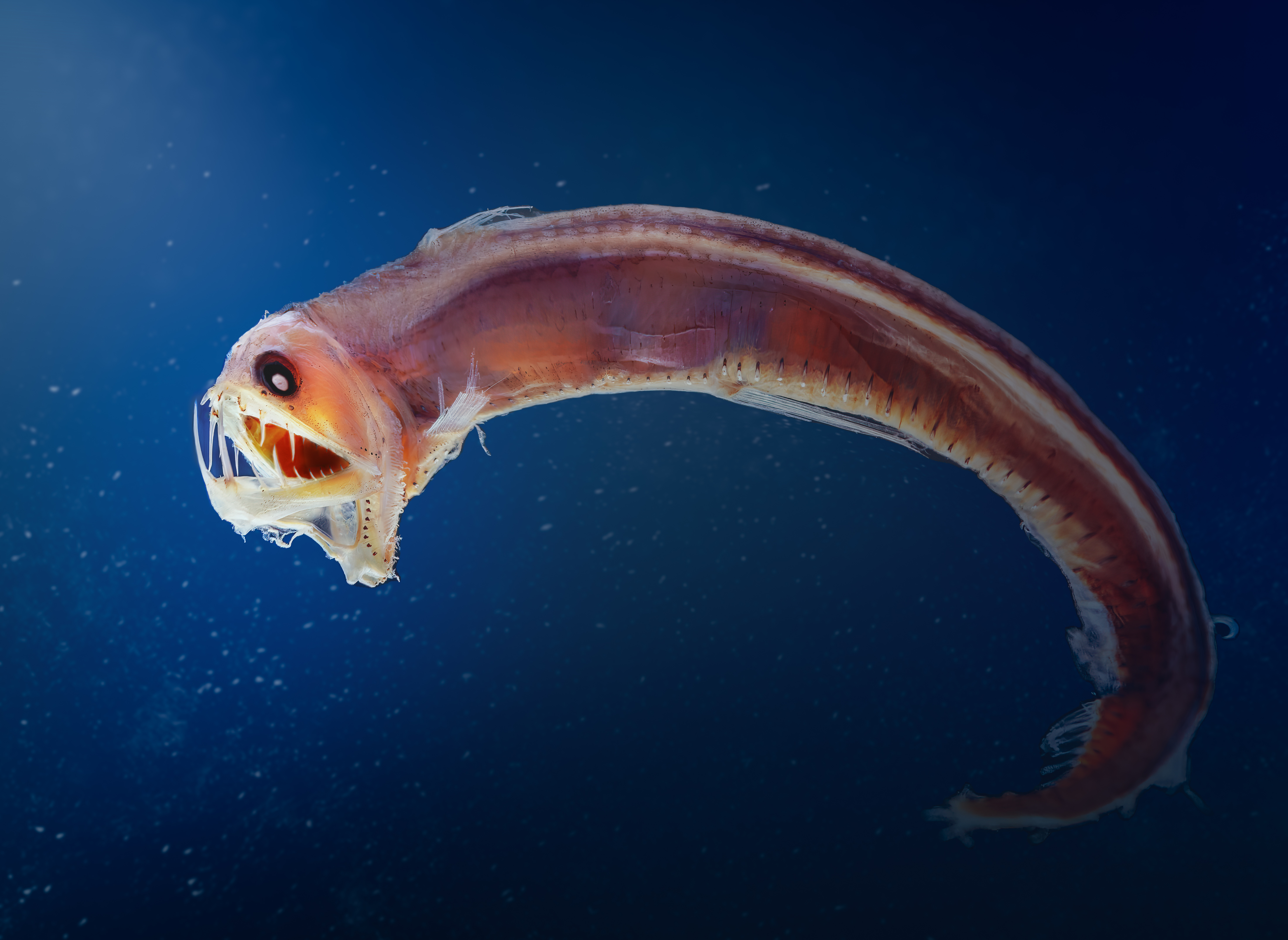Highlights of the BMC Series - [October] [2025]
Published in Healthcare & Nursing, Earth & Environment, and Ecology & Evolution
![Highlights of the BMC Series - [October] [2025]](https://images.zapnito.com/cdn-cgi/image/metadata=copyright,format=auto,quality=95,fit=scale-down/https://images.zapnito.com/users/840921/posters/759a1fb0-b10f-491e-bdff-940b3c1a87de_large.png)
BMC Nutrition - Associations between the overall nutritional quality of prepackaged food categories consumed at breakfast or as snacks and the presence of nutrition-related labelling messages: a cross-sectional analysis of products sold in the province of Québec (Canada)
Since 2003 onwards, Canadian regulations have required most prepackaged foods to feature a clear list of ingredients along with a detailed Nutrition Facts table. Evidence suggests that nutrient labeling helps regulate food quality and promote healthy diets. Starting in 2026, most prepackaged foods in Canada that are high in saturated fat, sugar, or sodium will be required to display Health Canada’s front-of-pack symbol (HC-FOPS), indicating excess levels of these nutrients.
.jpg)
Why focus on breakfast and snacks?
When we talk about nutrition, most people think of lunch or dinner, but breakfast and snacks play a huge role in shaping our daily nutritious demand. In the current study, researchers analyzed how the overall nutritional quality of popular breakfast and snack items like cereals, sliced breads, granola bars, and yogurts relates to nutrition related labeling. Using the 2017 Nutri-Score algorithm, the study assessed whether products with nutrition claims or Health Canada’s upcoming front-of-pack symbol (HC-FOPS) truly reflect better nutritional quality in grocery stores across Québec, Canada. The study found that breakfast and snack foods with nutrition claims are generally more nutritious than those without, but some less healthy products still carry such claims or avoid Health Canada’s upcoming front-of-pack symbol, revealing gaps in labeling consistency.
BMC Zoology -The physiological response of the Arctic key species Polar cod, Boreogadus saida, to hypoxia in a warming ocean: critical oxygen levels and swimming performance
The Arctic is warming at an alarming pace, much faster than the rest of the planet. This rapid change is reshaping ecosystems, reducing sea ice, and altering ocean circulation. One consequence is that deep, cold-water layers are receiving less oxygen-rich water, leading to oxygen depletion. For species like Polar cod (Boreogadus saida), which thrive in these ocean depths and form a crucial link in the Arctic food web, this raises an urgent question: Can they survive in a future Arctic that is warmer and less oxygenated?
A recent study published in BMC Zoology offers encouraging news. Researchers from the Alfred Wegener Institute Helmholtz Centre for Polar and Marine Research, Germany, investigated how Polar cod, Boreogadus saida, to two stressors: warming waters and low oxygen availability (hypoxia). Two groups of Polar cod were acclimated under controlled conditions where 30 fish to cold temperature, at 2°C over four months and 16 fish to warmer conditions, 10°C for four months. The warmer temperature was close to the polar cod's critical temperature (Tcrit) of 12°C where long term mortality rises sharply. Further, they were tested for their metabolic capacity including the hypoxia tolerance and swimming performance as key indicators of survival and ecological fitness.
The results?

Polar cod demonstrated remarkable resilience. Even under low-oxygen conditions, their performance remained strong, suggesting that this species is well-equipped to cope with environmental changes that might occur in the coming decades. This adaptability is critical because Polar cod is a cornerstone of the Arctic food web, yet it remains uncertain that this adaptation can keep pace with the rapid progression of climate change.
BMC Ecology and Evolution-Genome-wide phylogeny reshapes our understanding of the evolution of deep-sea dragonfishes, bristlemouths, viperfishes, and allies (Stomiiformes)
The deep sea may seem remote, but it plays a huge role in keeping our planet healthy. Deep-sea fish help move carbon from surface waters to the ocean depths, locking it away and slowing climate change. Among these, the order Stomiiformes, home to dragonfish, light fish, loosejaws, viperfish, bristlemouths, and hatchetfish, comprises the most diverse and successful groups, with over 460 species. These midwater predators show incredible adaptations like glowing bodies, see-through teeth, ultra-black skin, and extreme jaws that let them thrive in dark, high-pressure environments. Yet, despite their importance, scientists still struggle to piece together their evolutionary story because traditional classifications often clash with genetic evidence. Why is it important to understand this relationship? Because it is about biodiversity, carbon cycling, and how life adapts to a changing ocean.

A recent study in BMC Ecology and Evolution provides the latest insights into the evolutionary tree of Stomiiformes. Using genome wide data from 60 species and an expanded dataset of 86 additional species, researchers mapped a robust phylogenetic framework for the order, tested the monophyly of traditionally recognized families, and refined classifications. The findings clear up decades of confusion on systematic uncertainty among stomiiformes and highlight the importance of careful genomic data checks. This work shows how combining new genomic data with existing sequence resources can finally bring clarity to one of the ocean’s most diverse deep-sea fish.
BMC Environmental Science - Biodegradation of thiamethoxam in mango orchards by Pseudomonas spp: a study on soil health and sustainability
Neonicotinoids are modern insecticides modeled on the structure of nicotine. Farmers love them for their efficiency and selectivity, but their high-water solubility and persistence allow them to move to the soil rather than being retained on crops. These chemicals can seep into soil and water, posing serious risks to ecosystems and health.
In this study published in BMC Environmental Science, the authors sought to address the following question: can microbes help clean up soil contaminated with pesticide? Thiamethoxam (TMX), a second-generation neonicotinoid insecticide widely used in mango orchards, protects the fruit from pests but comes with a hidden cost. Its high water solubility, persistence, and toxicity pose serious risks to ecosystems and human health. Despite its widespread use, we still know little about how TMX residues affect soil environments. This study takes an eco-friendly and cost-effective approach to tackle this challenge: using TMX-degrading microbes to restore contaminated soils.
.jpg)
The authors isolated TMX-resistant bacteria from the soil samples collected from a mango orchard and molecular and phylogenetic analyses identified two of these strains as Pseudomonas spp. Their degradation efficiency was assessed at varying TM concentration in broth, sterile soil and non sterile soil conditions, and the highest degradation was observed in broth followed by sterile soil and non-sterile soil conditions. Researchers found that TMX degradation happens mainly through membrane-bound enzymes inside the cell, with little extracellular activity. These microbes offer a promising, biological solution for cleaning TMX-contaminated soils and restoring sustainability.
BMC Bioinformatics- VIRI: a visualization tool for tree reconciliations
Cophylogeny reconciliation is a powerful tool for studying how hosts and their symbionts evolve together. It involves mapping the phylogenetic tree of the symbionts onto that of their hosts. This mapping helps scientists trace four key evolutionary events such as 1) cospeciation 2) duplication 3) host switch and 4) loss. Visualizing these reconciliations not only reveals patterns of coevolution but also helps compare multiple solutions quickly, making it easier to spot trends and refine evolutionary models.
A study published in BMC Bioinformatics presents a new tree reconciliation visualizer VIRI. VIRI is a web-based tool that lets researchers easily visualize reconciliations between host and symbiont evolutionary trees by uploading .nex files and the corresponding .out files. It offers interactive features like highlighting the species names, making complex coevolutionary patterns easier to interpret. Plus, users can store the datasets and download their visualizations. They can also share datasets with the community or keep them private, fostering collaboration while ensuring flexibility.

In short, VIRI delivers clear, interactive, and easy to read visualizations of tree reconciliations, making complex coevolutionary patterns accessible to researchers.
Follow the Topic
-
BMC Nutrition

BMC Nutrition is an open access, peer-reviewed journal that considers articles on all aspects of nutritional sciences.
-
BMC Ecology and Evolution

An open access, peer-reviewed journal interested in all aspects of ecological and evolutionary biology.
-
BMC Zoology

This is an open access, peer-reviewed journal that considers articles on zoology, including comparative physiology, mechanistic and functional studies, morphology, life history, animal behavior, signaling and communication, cognition, parasitism, systematics, biogeography and conservation.
-
BMC Bioinformatics

This is an open access, peer-reviewed journal that considers articles describing novel computational algorithms and software, models and tools, including statistical methods, machine learning and artificial intelligence, as well as systems biology.
Related Collections
With Collections, you can get published faster and increase your visibility.
Epigenomics
BMC Bioinformatics is welcoming submissions to our Collection on the development of computational approaches in the study of epigenomics.
Epigenomics is the study of the complete set of epigenetic modifications across the genome and how these changes influence gene activity without altering the underlying DNA sequence. These modifications include DNA methylation and histone modifications, all of which influence gene activity. By mapping and understanding these modifications across the entire genome, epigenomic research provides insight into how cells respond to developmental cues and environmental signals, and how disruptions in these processes can lead to disease.
This Collection welcomes submissions on the development of new computational and/or statistical approaches for the study of epigenomics. We particularly encourage work that bridges computational innovation with meaningful biological interpretation. To promote cross-disciplinary impact, submissions should be clearly explained and accessible to both computational data scientists and biologists. Topics of interest include, but are not limited to, approaches for detecting epigenomic markers, analyzing chromatin accessibility, mapping histone modifications, and integrating epigenomic data with transcriptomic and phenotypic information.
All manuscripts submitted to this journal, including those submitted to collections and special issues, are assessed in line with our editorial policies and the journal’s peer-review process. Reviewers and editors are required to declare competing interests and can be excluded from the peer review process if a competing interest exists.
Publishing Model: Open Access
Deadline: Apr 16, 2026
Extracellular vesicle research
BMC Bioinformatics is welcoming submissions to our Collection on Extracellular vesicles research.
BMC Bioinformatics is welcoming submissions to our Collection on Extracellular vesicles research. Extracellular vesicles (EVs) are are small lipid bilayer-delimited particles released by cells that play crucial roles in intercellular communication and various physiological processes. The study of EVs has gained significant attention due to their potential as biomarkers for disease diagnosis, therapeutic targets and drug delivery systems. Advanced bioinformatics tools are essential for analyzing EV data, identifying EV-associated molecules, and understanding their biological functions.
This Collection welcomes submissions on the development of new computational and/or statistical approaches for the study of extracellular vesicles. We encourage contributions that highlight innovative methods for detecting and characterizing EVs and elucidating the molecular mechanisms underlying EV biogenesis and function.
All manuscripts submitted to this journal, including those submitted to collections and special issues, are assessed in line with our editorial policies and the journal’s peer-review process. Reviewers and editors are required to declare competing interests and can be excluded from the peer review process if a competing interest exists.
Publishing Model: Open Access
Deadline: Mar 30, 2026





Please sign in or register for FREE
If you are a registered user on Research Communities by Springer Nature, please sign in